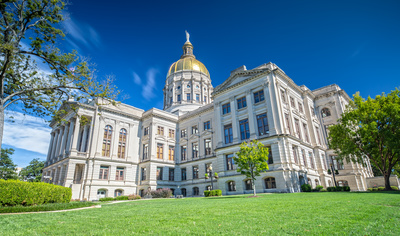
Elections & Campaigns, Energy & Environment
Nine States Face Key Public Utility Commission Elections Ahead of 2026
October 27, 2025 | Billy Culleton
August 13, 2025 | Bill Kramer

Key Takeaways:
State policymakers are preparing for major changes in supplying their residents and businesses with the electricity they’ll need to power the future. The biggest spark for this shift is the widespread expansion of data centers that currently power the cloud computing infrastructure we rely on daily and are increasingly driving the artificial intelligence (AI) tools that will power the future.
Forecasters believe that data centers will use 300% more energy in 10 years than they use today, and this will drive energy use across the electrical grid up 2% annually, compounded to a 50% increase in electric consumption across the U.S. by 2050. This increase is especially stark because over the past 20 years, electricity consumption on our grid has been flat as efficiency gains largely balanced out any rising demand. So while it doesn’t sound like much, going from zero to a 2% annual growth rate is a big deal.
To make matters worse, we’re entering a period of sustained demand growth on the grid at a time when many generating facilities are aging and nearing retirement. In the graph below, you can see that electricity production in the U.S. has shifted over the past 40 years from relying on coal to relying on cheaper and cleaner natural gas. The last decade has seen the growth of wind and now solar generation, but both are still a relatively small portion of our energy mix.
So, where will this new energy generation come from? That’s a key decision for policymakers. Wind and solar are popular options, but the intermittency of those sources causes their own challenges. Natural gas, which is abundant and offers quickly dispatchable base load capacity, will remain a key piece of the puzzle, but we’re currently facing a supply chain shortage of the turbines necessary to build new facilities. Nuclear power is both clean and sustainable, but nuclear faces both regulatory and PR challenges that draw out the build time to get such a facility up and running. Finally, small modular nuclear reactors and even enhanced geothermal techniques are promising, but too early in their development to expect much help in the short term. Clearing a path for new power generation is important even for these experimental sources. This year, Utah and North Dakota enacted laws to help spur the development of both enhanced geothermal and small modular reactors in their state.
To top off the list of challenges facing policymakers, increased energy demand will put pressure on the transmission lines needed to get the power from the plant to the homes and businesses that rely on them. DOE projects a 57% increase in new high-voltage transmission lines by 2035. The U.S. electrical grid is more than a century old and fragmented. Each state has its own regulatory bodies with over 3,000 utilities and 2,800 independent power producers spread across the country.
Reorienting the grid from maintenance to growth will be a major challenge. We expect energy policy to be a major trend at the state level as policymakers need to make reforms, clear the path for new technologies, and ensure that the electricity we rely on will reliably be generated and transmitted across the grid to where it needs to go.
This article appeared in our Morning MultiState newsletter on July 15, 2025. For more timely insights like this, be sure to sign up for our Morning MultiState weekly morning tipsheet. We created Morning MultiState with state government affairs professionals in mind — sign up to receive the latest from our experts in your inbox every Tuesday morning. Click here to sign up.

October 27, 2025 | Billy Culleton

July 8, 2025 | David Shonerd

June 17, 2025 | Billy Culleton